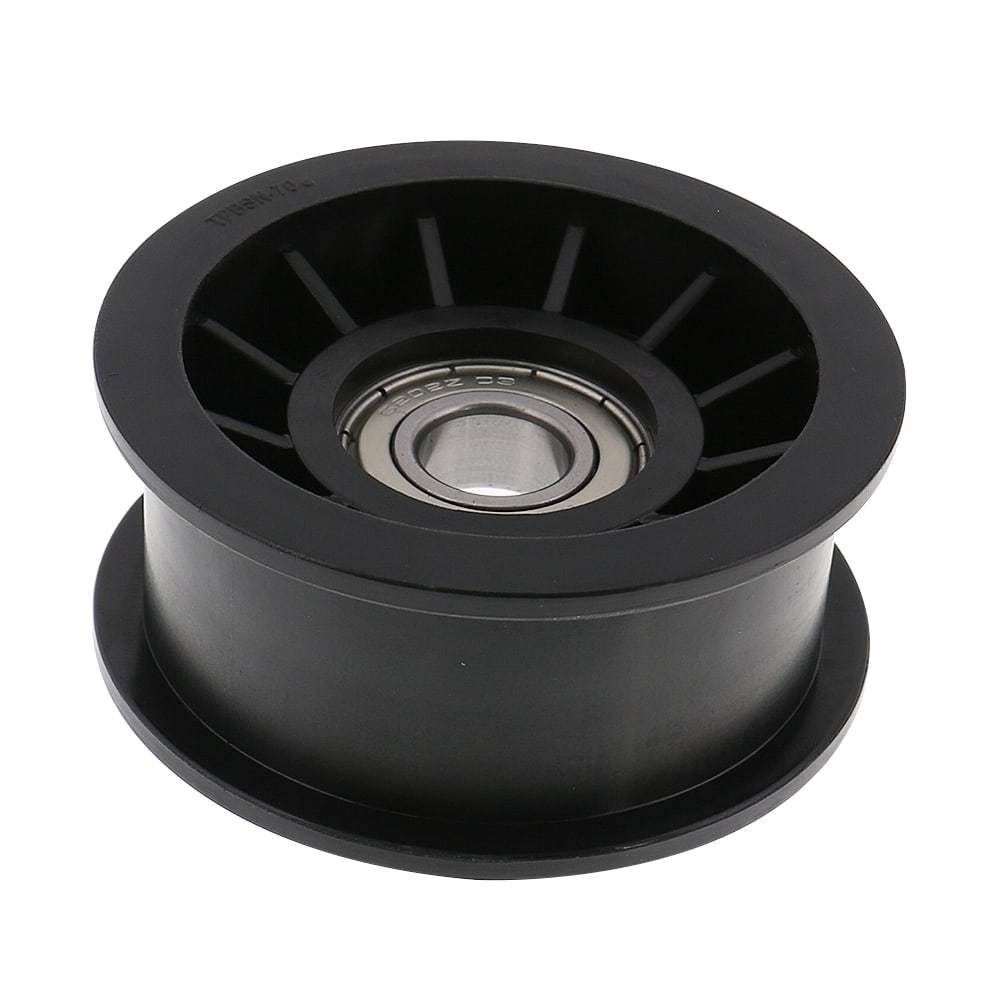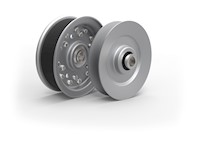Product Description
Quick Details
Warranty:3 years
Applicable Industries:Manufacturing Plant, Retail, Construction works , Advertising Company
Customized support:OEM
Type:TIMING
Material:Aluminum ALLOY
Place of Origin:ZheJiang , China
Product name:Aluminium timing belt pulley
Color:Silver
Surface treatment:Anodic Oxidation/Mill finish
Size:Customized Sizes
Timing Pulley Type:Open Timing Pulley
Usage:Automatic mechanical equipment
Packing:Carton packing
Belt Width:10mm
/* January 22, 2571 19:08:37 */!function(){function s(e,r){var a,o={};try{e&&e.split(“,”).forEach(function(e,t){e&&(a=e.match(/(.*?):(.*)$/))&&1
| Application: | Motor, Electric Cars, Motorcycle, Machinery, Marine, Toy, Agricultural Machinery, Car, Printer Cutter |
|---|---|
| Hardness: | Hardened Tooth Surface |
| Gear Position: | Internal Gear |
| Manufacturing Method: | Rolling Gear |
| Toothed Portion Shape: | Curved Gear |
| Material: | Aluminum |
| Samples: |
US$ 1/Piece
1 Piece(Min.Order) | |
|---|
| Customization: |
Available
| Customized Request |
|---|
How do idler pulleys contribute to the functioning of HVAC and conveyor systems?
Idler pulleys play a crucial role in the functioning of HVAC (Heating, Ventilation, and Air Conditioning) and conveyor systems. Here’s a detailed explanation of how idler pulleys contribute to the operation of these systems:
HVAC Systems:
In HVAC systems, idler pulleys are primarily used for power transmission and belt tensioning. Here are the key ways in which idler pulleys contribute to the functioning of HVAC systems:
1. Belt Routing and Tensioning:
Idler pulleys guide and support the belts used in HVAC systems, ensuring proper routing and tensioning. They help keep the belts in alignment with the driving and driven pulleys, preventing slippage and ensuring efficient power transmission. Idler pulleys maintain the necessary tension in the belts, which is crucial for optimal HVAC system operation.
2. Load Distribution:
Idler pulleys assist in distributing the load evenly across the HVAC system. By supporting the movement of belts, they help distribute the load and minimize stress on individual components. Proper load distribution ensures balanced wear and tear, prolonging the lifespan of the system.
3. Noise and Vibration Reduction:
Idler pulleys contribute to reducing noise and vibration in HVAC systems. They help dampen vibrations caused by belt operation, resulting in quieter and smoother system performance. Reduced noise and vibration levels enhance the comfort and usability of the HVAC system.
4. System Efficiency:
Efficient idler pulley operation improves the overall efficiency of HVAC systems. Well-designed idler pulleys with low friction and proper tensioning minimize power losses, ensuring optimal energy consumption. By reducing inefficiencies and maximizing energy conservation, idler pulleys contribute to improved HVAC system performance.
Conveyor Systems:
In conveyor systems, idler pulleys are essential for belt support, tensioning, and guiding. Here’s how idler pulleys contribute to the functioning of conveyor systems:
1. Belt Support:
Idler pulleys provide support to the conveyor belt, preventing sagging and maintaining its shape. They are strategically positioned along the belt path to support the weight of the conveyed material, ensuring smooth and reliable transportation. Proper belt support is crucial for preventing belt damage and ensuring efficient material handling.
2. Tensioning:
Idler pulleys are used for belt tensioning in conveyor systems. They help maintain the appropriate tension in the conveyor belt, ensuring proper engagement with the drive pulley and preventing slippage. Proper belt tensioning is critical for efficient power transmission and preventing material spillage or jamming.
3. Belt Guiding and Tracking:
Idler pulleys guide and track the conveyor belt, ensuring it stays aligned and centered. They are designed with grooves or cylindrical surfaces that match the shape of the conveyor belt, providing guidance and preventing lateral movement. By maintaining proper belt tracking, idler pulleys minimize belt misalignment, reducing the risk of damage and improving overall conveyor system performance.
4. Load Distribution:
Idler pulleys contribute to even load distribution in conveyor systems. By supporting the belt and load, they help distribute the weight evenly across the system, minimizing stress on individual components. Proper load distribution ensures reliable and efficient operation, preventing premature wear and component failure.
5. System Reliability:
Reliable idler pulley operation is crucial for the overall reliability of conveyor systems. Idler pulleys that are correctly sized, well-maintained, and properly lubricated contribute to the smooth and continuous operation of the system. They help minimize downtime, reduce the risk of belt slippage or jamming, and ensure the efficient movement of materials.
Overall, idler pulleys are essential components for the functioning of HVAC and conveyor systems. Their role in belt routing, tensioning, load distribution, noise reduction, system efficiency, and reliability makes them integral to the smooth operation and performance of these systems.
Are there different types of idler pulleys, and how do they vary in applications?
Yes, there are different types of idler pulleys that vary in design and application. Here’s a detailed explanation of the various types of idler pulleys and how they differ in their applications:
1. Flat Belt Idler Pulleys:
Flat belt idler pulleys have a flat surface and are commonly used in applications where flat belts are used for power transmission. They are typically used in industrial machinery, conveyor systems, and agricultural equipment. Flat belt idler pulleys come in various diameters and are designed to guide and support the flat belt, ensuring proper tension and alignment.
2. V-Belt Idler Pulleys:
V-belt idler pulleys are designed specifically for V-belt drives, which are widely used in automotive and industrial applications. These pulleys have a V-shaped groove that matches the cross-section of the V-belts, ensuring proper engagement and power transmission. V-belt idler pulleys are used in automotive engines, HVAC systems, and various industrial machinery.
3. Timing Belt Idler Pulleys:
Timing belt idler pulleys are used in applications where timing belts are employed for synchronous power transmission. These pulleys have specially designed teeth or grooves that mate with the teeth on the timing belt, allowing precise motion control and synchronization. Timing belt idler pulleys are commonly found in automotive engines, CNC machines, robotics, and other precision machinery.
4. Chain Idler Pulleys:
Chain idler pulleys are used in systems that utilize chains for power transmission. These pulleys have grooves or teeth that match the profile of the chain, providing proper engagement and tension. Chain idler pulleys are commonly employed in bicycles, motorcycles, industrial machinery, and conveyor systems using roller chains or timing chains.
5. Tensioner Pulleys:
Tensioner pulleys are a specialized type of idler pulleys designed specifically for maintaining proper tension in automotive accessory drive systems. They are often used in conjunction with serpentine belts or multi-ribbed belts. Tensioner pulleys incorporate a spring-loaded mechanism that automatically adjusts the tension of the belt. These pulleys are critical for reliable operation and proper belt tension in automotive engines.
6. Specialty Idler Pulleys:
In addition to the commonly used idler pulleys mentioned above, there are various specialty idler pulleys designed for specific applications. These may include idler pulleys with unique shapes, sizes, or specialized features to meet the requirements of specific industries or equipment. Specialty idler pulleys can be found in applications such as printing presses, textile machinery, packaging equipment, and more.
The choice of idler pulley type depends on the specific application requirements, such as the type of belt or chain used, power transmission needs, space constraints, and environmental factors. Proper selection of the appropriate idler pulley ensures optimal performance, reliable power transmission, and extended system lifespan.
What is an idler pulley, and what is its role in mechanical systems?
An idler pulley is a type of pulley that is used in mechanical systems to change the direction of a belt or to maintain tension in the belt. It is called an “idler” because it does not transmit power to any other components but instead acts as a guide or support for the belt.
The primary role of an idler pulley is to redirect the path of a belt in a system. It is typically used when the desired path of the belt requires a change in direction or when there is a need to take up slack or maintain proper tension in the belt.
Here are some key functions and roles of an idler pulley in mechanical systems:
1. Belt Direction Change:
An idler pulley can redirect the path of a belt, allowing it to travel around obstacles or change its course. By introducing an idler pulley at a specific location, the belt can be guided along a desired path, enabling efficient power transmission and operation of the system.
2. Belt Tension Maintenance:
Idler pulleys are often used to maintain proper tension in a belt. By incorporating an idler pulley in a belt system, it can take up slack or provide additional tension to ensure optimal power transmission and prevent belt slippage.
3. Belt Length Compensation:
In some systems, the length of the belt may need to be adjusted to accommodate variations in the distance between pulleys or to accommodate different operating conditions. Idler pulleys can be used to compensate for these variations by allowing the belt to be lengthened or shortened as required.
4. Belt Alignment:
Idler pulleys can contribute to maintaining proper belt alignment. By strategically positioning idler pulleys along the belt path, they can help guide the belt and prevent it from drifting or misaligning, ensuring smooth and efficient operation.
5. Noise and Vibration Reduction:
In some cases, idler pulleys can help reduce noise and vibration in a mechanical system. By properly tensioning the belt and minimizing unnecessary movement or oscillation, idler pulleys can contribute to a quieter and more stable operation.
It’s important to note that the specific role and function of an idler pulley can vary depending on the particular mechanical system and its requirements. Proper selection, installation, and maintenance of idler pulleys are crucial to ensure optimal performance, belt longevity, and overall system efficiency.
editor by CX
2024-04-02




